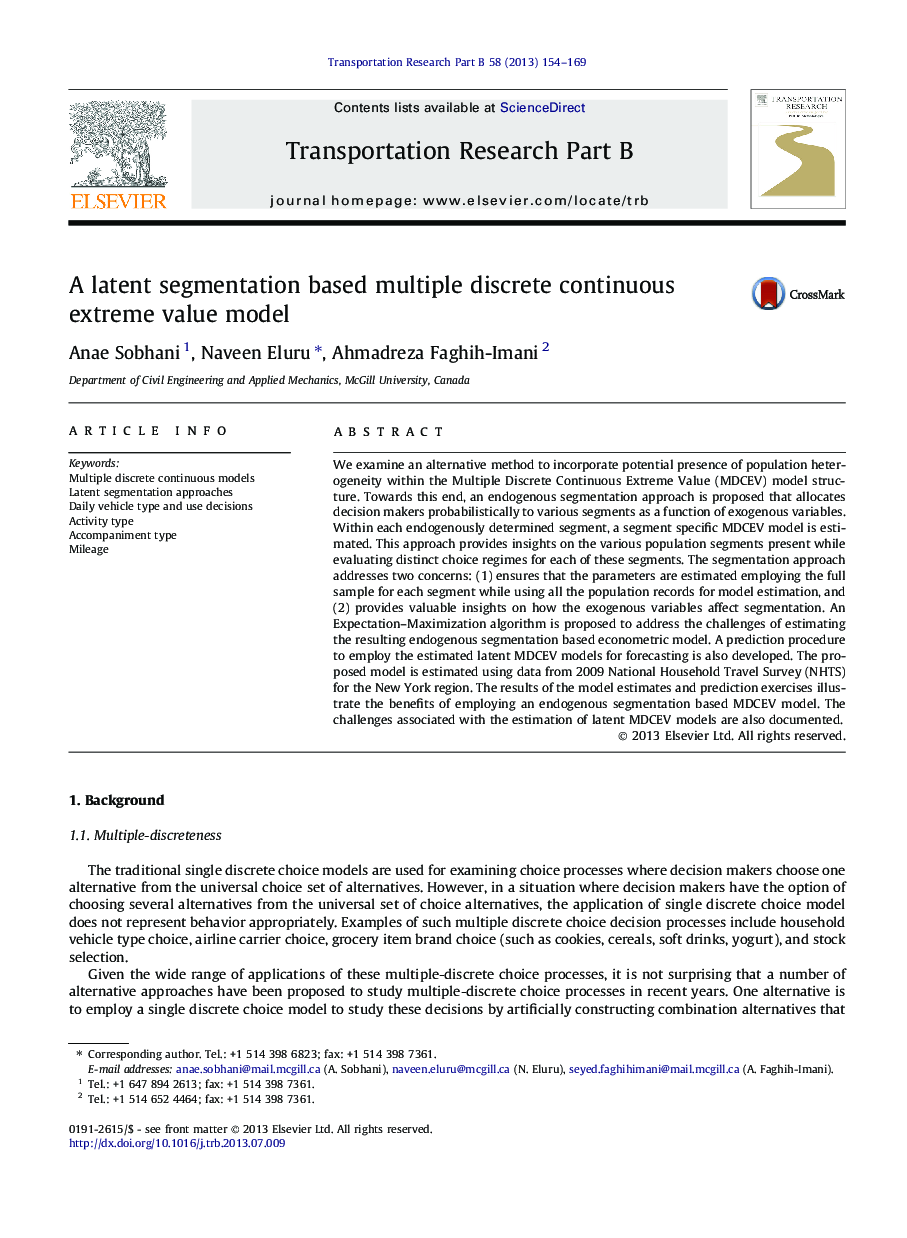| Article ID | Journal | Published Year | Pages | File Type |
|---|---|---|---|---|
| 1132050 | Transportation Research Part B: Methodological | 2013 | 16 Pages |
•We propose a latent segmentation multiple discrete continuous extreme value model.•EM and FIML estimation procedures are employed.•Prediction for the latent MDCEV model is developed.•Estimate and validate the model using National household Travel Survey Data for the New York region.
We examine an alternative method to incorporate potential presence of population heterogeneity within the Multiple Discrete Continuous Extreme Value (MDCEV) model structure. Towards this end, an endogenous segmentation approach is proposed that allocates decision makers probabilistically to various segments as a function of exogenous variables. Within each endogenously determined segment, a segment specific MDCEV model is estimated. This approach provides insights on the various population segments present while evaluating distinct choice regimes for each of these segments. The segmentation approach addresses two concerns: (1) ensures that the parameters are estimated employing the full sample for each segment while using all the population records for model estimation, and (2) provides valuable insights on how the exogenous variables affect segmentation. An Expectation–Maximization algorithm is proposed to address the challenges of estimating the resulting endogenous segmentation based econometric model. A prediction procedure to employ the estimated latent MDCEV models for forecasting is also developed. The proposed model is estimated using data from 2009 National Household Travel Survey (NHTS) for the New York region. The results of the model estimates and prediction exercises illustrate the benefits of employing an endogenous segmentation based MDCEV model. The challenges associated with the estimation of latent MDCEV models are also documented.
